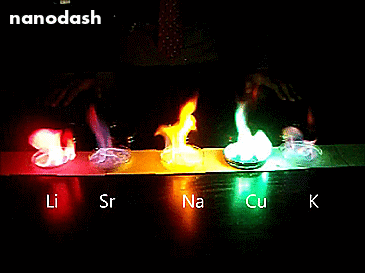According To This Scientific Study: There's A Steamy Hot Extra_Solar Planet In A Certain Other Solar_System
According to This Scientific Study: There's a Steamy Hot Extra_Solar Planet in a Certain Other Solar_System that might be Habitable to Life.
More Posts from Aspergers1044 and Others

Farewell to The Science Blog Network!

Could it be that the way to slow down before arriving at a destination Solar_System is to use Solar_Sails to Reflect Light coming from The Destination Solar_System for a Longtime before entering into The Destination Solar_System?
It's not quite Warp Drive, but Researchers are hot on the trail of building Nuclear Fusion Impulse Engines, to complete with Real-Life Dilithium Crystals.
Here’s a Look at Kepler’s Second_Law of Planetary Motion.

This image displays Kepler’s second law of planetary motion.
“A line joining a planet and the Sun sweeps out equal areas during equal intervals of time” (Meaning that each triangle seen there has equal area.)
The black dot represents a planet, the point where the black lines intersect represent the sun.
The green arrow represents the planet’s velocity,
The purple arrows represents the force on the planet.
(Image source: here)
Here's some more information on NASA's Juno_Mission.
Juno: Join the Mission!
Our Juno spacecraft may be millions of miles from Earth, but that doesn’t mean you can’t get involved with the mission and its science. Here are a few ways that you can join in on the fun:
Juno Orbit Insertion

This July 4, our solar-powered Juno spacecraft arrives at Jupiter after an almost five-year journey. In the evening of July 4, the spacecraft will perform a suspenseful orbit insertion maneuver, a 35-minute burn of its main engine, to slow the spacecraft by about 1,212 miles per hour so it can be captured into the gas giant’s orbit. Watch live coverage of these events on NASA Television:
Pre-Orbit Insertion Briefing Monday, July 4 at 12 p.m. EDT
Orbit Insertion Coverage Monday, July 4 at 10:30 p.m. EDT
Join Us On Social Media

Orbit Insertion Coverage Facebook Live Monday, July 4 at 10:30 p.m. EDT
Be sure to also check out and follow Juno coverage on the NASA Snapchat account!
JunoCam

The Juno spacecraft will give us new views of Jupiter’s swirling clouds, courtesy of its color camera called JunoCam. But unlike previous space missions, professional scientists will not be the ones producing the processed views, or even choosing which images to capture. Instead, the public will act as a virtual imaging team, participating in key steps of the process, from identifying features of interest to sharing the finished images online.

After JunoCam data arrives on Earth, members of the public will process the images to create color pictures. Juno scientists will ensure JunoCam returns a few great shots of Jupiter’s polar regions, but the overwhelming majority of the camera’s image targets will be chosen by the public, with the data being processed by them as well. Learn more about JunoCam HERE.
Follow our Juno mission on the web, Facebook, Twitter, YouTube and Tumblr.
Make sure to follow us on Tumblr for your regular dose of space: http://nasa.tumblr.com

Here are two interesting Books to read. A Star_Wars Atlas and Vistas of Many Worlds.
Here’s what David Brin has to say about:
The Rise of The Internet.
Mixing Salts of Different Metals.

So this is what happens when you mix salts of different metals (Lithium, Strontium, Sodium, Copper, and Potassium) into methanol and then light that sucker.
Pretty colours is what.
Each metal has a different configuration of electrons orbiting in the atom. When the different atoms get energy from the heat, the electrons in the different metals will be excited by a different amount. When they de-excite they release that energy as light. Different metals release different eneriges. Different energies is different colours. The more energy, the violeter the light.
Using different metal salts is also how fireworks do the thing.
See the streetlight yellow in the Sodium (Na)? Well that’s because we use sodium lamps in streetlights
In May this year, the Templeton Prize went to Tensin Gyatso (aka the 14th Dalai Lama), however an additional grant of $200,000 has also been given to cosmologist Geoff Marcey of Berkeley. Marcey realized that the Kepler data might also reveal stars that are surrounded by Dyson Spheres.
The Search for Extraterrestrial Dyson_Spheres and Extrasolar Space Habitats in other solar_systems.
It's not quite warp drive, but researchers are hot on the trail of building nuclear fusion impulse engines, complete with real-life dilithium crystals. Read this article by Amanda Kooser on CNET.

